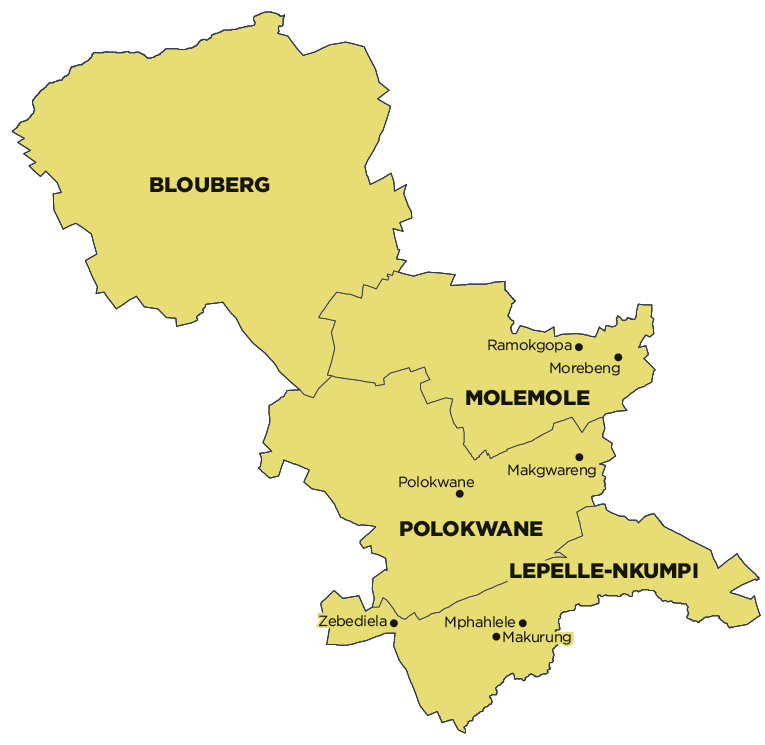
Part of Aganang Local Municipality was merged into Polokwane Local Municipality on 3 August 2016. Financial, Employment and Service Delivery information prior to the 2016/17 financial year only includes figures for Polokwane Local Municipality. View historical information for Aganang Local Municipality.
Geography, History & Economy
Polokwane Local Municipality is part of Capricorn District Municipality.
MDB code: LIM354
Description: The Polokwane Local Municipality is a Category B municipality located within the Capricorn District in the Limpopo Province. It is one of four municipalities in the district, making up just under a quarter of its geographical area.
It is a city with more than a century of phenomenal growth and prosperity. Polokwane Municipality accounts for 3% of the total surface area of Limpopo, however, over 10% of the population of Limpopo resides within its boundaries. The municipality serves as the economic hub of Limpopo, and has the highest population density in the Capricorn District. It shares its name with the city of Polokwane (previously Pietersburg). In February 2002, the city was renamed Polokwane – a northern Sesotho word that means ‘place of safety’.
The municipal spatial pattern reflects that of the historic apartheid city model, characterised by segregated settlement. At the centre of the area is the Polokwane economic hub, which comprises the central business district, industrial area, and a range of social services and well-established formal urban areas servicing the more affluent residents of Polokwane. Situated on the outskirts in several clusters are less formal settlement areas, which are experiencing enormous influx from rural urban migration trends.
These areas are in dire need of upgraded services and infrastructure, both social and engineering, and are struggling to cope with the informal influx of more and more people who want access to an improved quality and standard of living.
Area: 5 054km²
Cities/Towns: Polokwane
Main Economic Sectors: Community services (32.1%), finance (21.5%), wholesale and retail trade (18.3%), transport (11.7%), manufacturing (4.8%), mining (4.2%)
